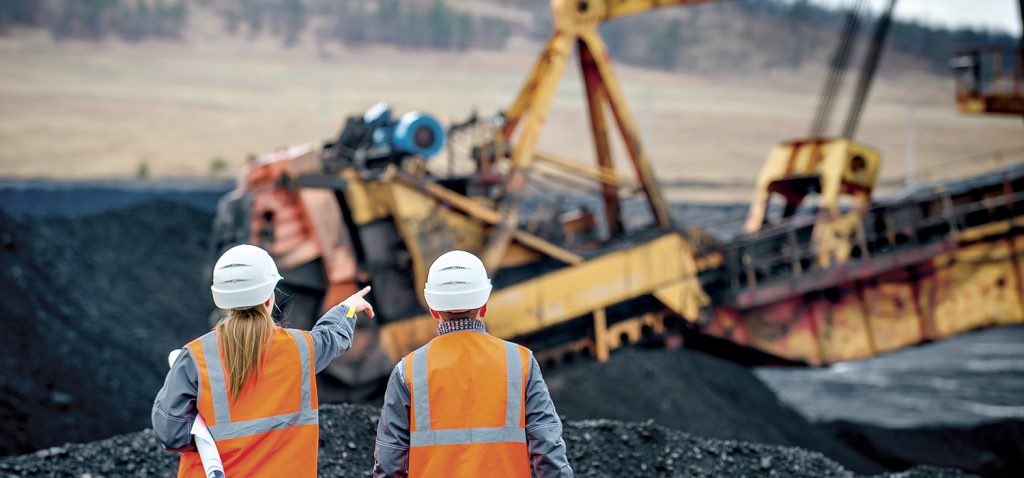SA Mining
Power Play
Women constitute 51% of the 57.7 million people in South Africa, yet account for under 15% of the mining sector which employs around 460 000 individuals. However, requirements arising from Mining Charter 3 will set the platform for the advancement of women in the mining sector, states African law firm, ENSafrica.
Given the targets set out by the charter for increased participation of women in mining, can the sector meet the stipulated objectives within the required time frame of five years?
“The charter prescribes a period of five years from the date of publication for mining companies to align with the outlined employment equity targets. Furthermore, a five-year plan indicating progressive implementation on the provisions of the employment equity targets must be submitted to the Department of Mineral Resources within six months of publication of the 2018 Mining Charter i.e. March 2019,” ENSafrica executive Ntsiki Adonisi-Kgame tells SA Mining.
According to the Minerals Council South Africa (MCSA), the number of women working in the mining sector increased significantly in the past 15 years, from around 11 400 in 2002 to around 53 000 in 2015, increasing to 53 179 in 2017.
“Women represent 12% of the mining labour force of 464 667. The MCSA 2017 fact sheet indicates that women make up 14.9% of the workforce in top management, 15.9% in senior management, 18% in professionally qualified and middle management and 18% in skilled technical professions.”
Going forward, boards of all mining companies are required to have at least 50% members from historically disadvantaged persons (HDP) groups and 20% woman representation; at executive management level 50% of staff must be from HDP groups with 20% woman representation, at senior and middle-management level; 60% of people on this level must be from HDP groups and consist of 25% women while at junior management level, 70% of the workforce must also originate from the HDP background and consist of 30% women.
Highlighting associated challenges, Adonisi-Kgame explains that some of the criticisms levelled at the charter’s employment equity targets include the notion that the revised targets are considered to be impractical and inordinately difficult to meet, especially “when half of the black population is under the age of 25 and only 3% of black people have the university degrees that are often needed or advisable for management positions”.
“This perhaps explains why the latest charter accommodates white women and is not specific about the race of the females that must be recruited by mining companies to comply with the targets.”
Carlyn Frittelli Davies, a natural resources and environment executive at ENSafrica, adds that while the criticisms that there are insufficient skilled females to meet the revised employment equity targets may be valid, it must be noted that the current intake of students at universities and technical colleges in the field of mining engineering is fairly balanced between males and females, and is likely to have a beneficial effect on the number of women entering the mining industry.
Although incentives such as bursaries are used to attract young women to mining, the problem is that the incentives take some years to trickle down.
“There may be more females studying mining subjects at university, but their presence in management will not be felt until they have gained the relevant experience which will, in turn, open up higher positions to them.”
Frittelli Davies adds that with the unemployment level of graduates pegged at 33%, “it is clear that the youth represent untapped potential”.
“The youth are in need of employment opportunities and the mining industry may be a significant player in this regard.”
She notes that given the increased trend towards mechanisation in mining and the subsequent need to upskill workers, efforts to upskill workers should also focus on HDSAs and, in particular, black women.
“A change in any industry creates opportunity and this should be welcomed.”
A number of mining companies and organisations, such as Women in Mining South Africa, are already implementing plans that support the education of women in mining and mining-related studies at university level.
“The focus of women in mining should not be centred on new entrants into the sector only; rather the focus should also be on empowering women who occupy lesser roles in the industry to become key players as well as training and funding for the education of the young women in this country who wish to enter the industry,” says Adonisi-Kgame.
Going forward, ENSafrica advises that mining companies will need to implement diversity policies in their organisations, including training and skills development opportunities, career development opportunities (mentorships, career paths and career guidance) and financial assistance (for example bursaries) to contribute towards a skilled workforce and to empower women, and enhance productivity, personal satisfaction and job enrichment.
Moreover, mining houses will need to take note of the specific needs of women in order to create an attractive environment conducive to women working in core mining activities and thereby contribute to the sustainable deployment of women in the industry.
Although most mining companies have made considerable efforts in accommodating women in the core business of mining, they continue to struggle in overcoming some key issues, such as the integration of women into the stereotyped male-dominated workforce, pregnancy-related issues, the physical ability and capability of women, cultural issues and the attraction to and retention of women in the industry.
“Mining as a sector has always been a significant contributor to gross domestic product and in the same vein can become a significant contributor to the transformation of the South African economy,” says Adonisi-Kgame.







 Sign-up and receive the Business Media MAGS newsletter OR SA Mining newsletter straight to your inbox.
Sign-up and receive the Business Media MAGS newsletter OR SA Mining newsletter straight to your inbox.